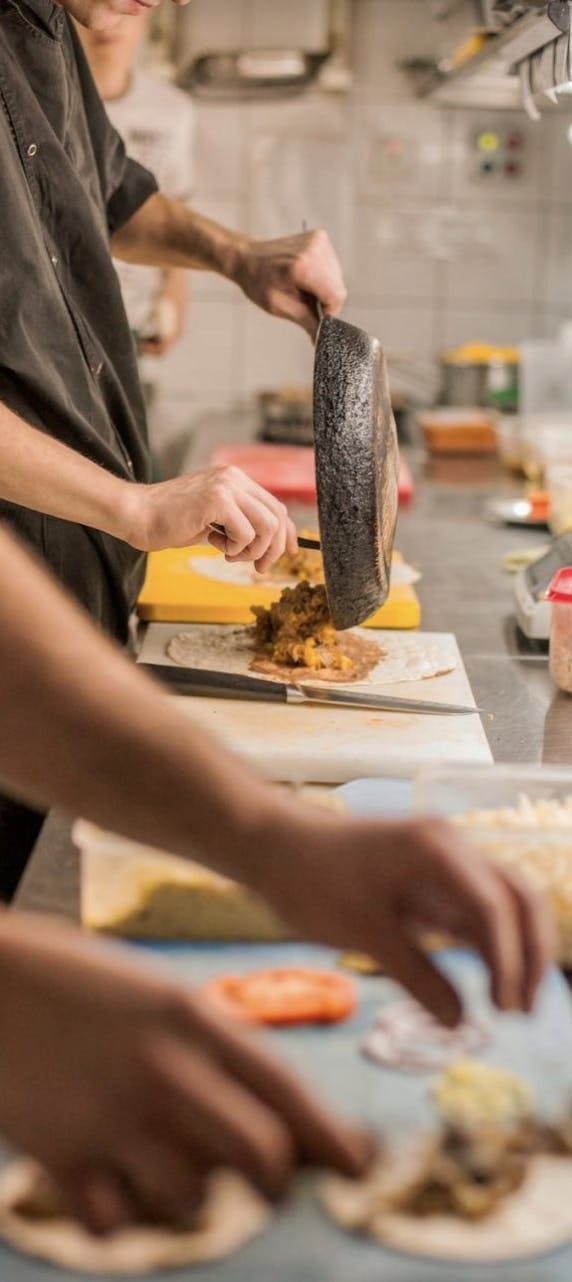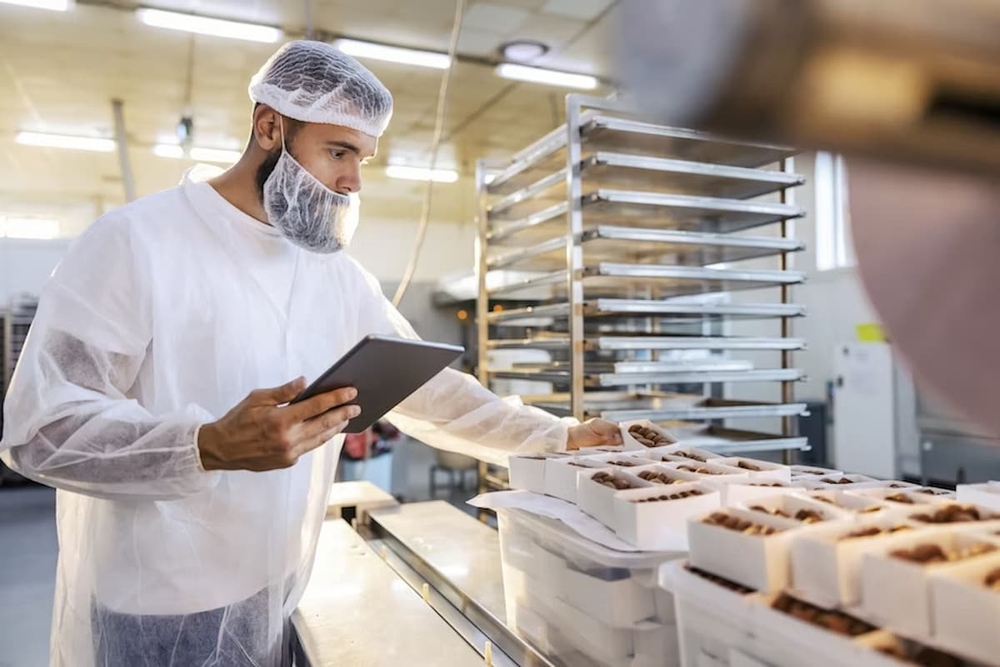How weather affects food delivery: Challenges, safety, and solutions for the modern kitchen
Table of Contents
CloudKitchens
How many tacos can be delivered from a 1000sqft restaurant?
The same amount as a 200sqft ghost kitchen.
Food delivery has become an essential part of modern life, offering convenience and variety at the tap of a screen. But behind every seamless order is a complex web of logistics, technology, and human effort especially when the weather turns extreme.
From snowstorms and heatwaves to heavy rain and icy roads, weather conditions can dramatically impact food delivery operations, affecting everything from delivery times and food safety to driver well-being and environmental sustainability.
This comprehensive guide explores how weather affects food delivery, the challenges faced by restaurants and drivers, best practices for temperature control, and the broader implications for the environment and business operations.
Read more: The US Food Delivery Scene: What the Numbers Say
The impact of weather on food delivery demand
Weather is one of the most significant external factors influencing food delivery demand and operations. When conditions are harsh, be it a blizzard, heatwave, or torrential rain, consumers are far more likely to order in than venture out.
Studies show that food delivery orders can surge by up to 13% during heatwaves and by even higher margins during snowstorms or severe cold, with pizza orders rising as much as 135% after major blizzards in cities like New York.
This surge in demand presents both opportunities and challenges for restaurants and delivery platforms. While more orders can boost revenue, they also strain logistics and increase risks for delivery drivers.
Weather challenges for delivery drivers and operations
Weather poses a unique set of challenges for food delivery drivers and the operations teams that support them. Adverse conditions such as heavy rain, snow, ice, extreme heat, or storms can disrupt every stage of the delivery process, from food preparation to the final handoff at the customer’s door.
These disruptions not only increase the risk of accidents and delays but can also raise operational costs and compromise food safety if not managed properly. Understanding these challenges is crucial for food businesses aiming to maintain reliability and quality service, regardless of the forecast.
1. Safety risks for delivery workers
Extreme weather exposes delivery drivers to significant hazards:
- Heatwaves: Couriers face risks of dehydration, heat exhaustion, and heatstroke. Research indicates that as temperatures rise, delivery workers spend more time exposed to dangerous heat, with a 9-degree increase in temperature leading to about 9% more orders per hour and couriers working up to 6% longer during heatwaves.
- Snow and ice: Slippery roads, poor visibility, and blocked routes increase the risk of accidents and injuries. Delivery times slow down, and drivers may have to reroute or cancel orders.
- Heavy rain and storms: Flooded streets, reduced traction, and strong winds make driving hazardous and can damage food packaging or compromise food safety.
Many delivery workers lack adequate mitigation options or health insurance, making these risks even more pronounced.
2. Delays and customer satisfaction
Bad weather almost always leads to delivery delays. Slower traffic, road closures, and increased order volumes mean longer wait times for customers. These delays can impact customer satisfaction, ratings, and repeat business.
3. Vehicle and equipment challenges
Extreme temperatures can cause vehicle breakdowns or make it harder to keep food at safe temperatures. Hot weather can lead to engine overheating, while cold weather can cause battery failures or icy windshields.
Food safety: Temperature control in all conditions
Maintaining safe food temperatures during delivery is critical, regardless of the weather. The “danger zone” for food safety is between 41°F (5°C) and 135°F (57°C), where bacteria multiply rapidly. Food must be kept outside this range to prevent foodborne illness.
Hot food
- Should be delivered at 135°F (57°C) or higher.
- Use insulated containers or hot holding equipment to maintain temperature.
Cold food
- Should be delivered at 41°F (5°C) or lower.
- Chilled foods ideally below 8°C (46°F), aiming for 5°C (41°F).
- Frozen foods should be delivered at -18°C (0°F) or below.
Delivery best practices
- Use insulated bags, thermal containers, or refrigerated vehicles for temperature-sensitive foods.
- Separate hot and cold items to prevent cross-contamination.
- Check food temperatures with a thermometer before dispatch and upon delivery.
- Seal and package food tightly to prevent tampering and contamination.
Read more: Tips for proper food delivery packaging: A guide for restaurants
How delivery drivers keep food hot or cold
Delivery drivers rely on several tools and techniques to maintain food quality during transit:
- Insulated delivery bags: Keep hot foods hot and cold foods cold for short trips.
- Thermal containers: Provide better temperature control for longer distances or extreme weather.
- Refrigerated vehicles: Used for large orders, catering, or high-end delivery services, especially for frozen or highly perishable foods.
- Ice packs or hot packs: Supplement insulation for extra temperature-sensitive items.
- Efficient routing: Minimize time on the road to reduce the risk of temperature loss.
IoT and smart tracking technology are increasingly used to monitor temperatures in real time, alerting drivers and kitchens to any deviations.
Read more: Integrating POS and online platforms in production kitchens
Weather and food delivery logistics: Technology and adaptation
As unpredictable weather becomes a constant factor in the food delivery industry, technology and adaptive strategies play a pivotal role in keeping operations running smoothly. Leveraging digital tools and innovative logistics solutions allows restaurants and delivery platforms to respond quickly to changing conditions, minimize disruptions, and maintain customer satisfaction.
Here’s how technology and smart adaptation are transforming food delivery logistics in the face of weather challenges:
Route optimization
Advanced software and GPS data help delivery platforms adjust routes in real time based on weather and traffic conditions. This minimizes delays and maximizes efficiency, even during storms or rush hours.
Demand forecasting
Weather data is now integrated into marketing and operational decisions. For example, platforms can trigger promotions or increase driver availability in anticipation of bad weather, ensuring enough capacity to meet surges in demand.
Read more: Restaurant Technology: Boost your business with the best technology trends
The environmental impact of food delivery in all weather
Food delivery’s environmental footprint is significant, and weather can exacerbate these effects:
- Increased emissions: More vehicles on the road during bad weather mean higher fuel consumption and greenhouse gas emissions.
- Packaging waste: Delivery relies heavily on single-use packaging, much of which is not recyclable and ends up in landfills.
- Food miles: The distance food travels from kitchen to customer adds to the carbon footprint, especially when routes are longer due to weather-related detours.
Some delivery-only kitchens are adopting eco-friendly practices, such as optimizing energy use, using biodegradable packaging, and consolidating orders, to reduce their impact.
Read more: 10 Eco-Friendly Practices in Delivery-Only Kitchens
How weather affects food delivery app performance
Weather not only impacts physical delivery but also the performance of food delivery apps and platforms:
- Order surges: Apps see spikes in downloads and orders during bad weather, prompting them to adjust marketing and promotions.
- Driver shortages: Fewer drivers may be willing to work in extreme conditions, leading to longer delivery times and higher fees.
- App reliability: High order volumes can strain app infrastructure, causing slowdowns or outages.
How restaurants and kitchens can prepare for weather challenges
Monitor weather forecasts
Stay updated with real-time weather data to anticipate disruptions. This allows you to adjust staffing, inventory, and delivery schedules ahead of time, minimizing surprises. Proactive planning helps ensure smoother operations during sudden weather changes.
Adjust menus
Offer menu items that travel well and keep their quality in extreme temperatures. Consider simplifying your offerings during bad weather to speed up prep and reduce mistakes. This approach helps maintain food standards and customer satisfaction.
Communicate with customers
Clearly inform customers about possible delivery delays or limited menu options due to weather. Use app notifications, emails, or social media for timely updates. Transparent communication builds trust and manages expectations.
Support drivers
Equip drivers with weather-appropriate gear and encourage regular breaks for safety. Provide a place to rest and stay hydrated during extreme conditions. Showing care for drivers helps maintain morale and reliable service.
Leverage technology
Use delivery management software to optimize routes and monitor food safety in real time. Technology can help reroute drivers and keep customers informed about their orders. Smart tools improve efficiency and safety during challenging weather.
Read more: How CloudKitchens helps brands expand into new delivery markets in America
How CloudKitchens helps food businesses weather the storm
CloudKitchens is uniquely positioned to help food businesses thrive in all weather conditions. By partnering with us, food businesses can minimize weather-related risks, maintain high standards of food safety, and deliver great customer experiences, rain or shine. Ready to future-proof your food delivery business?
Contact CloudKitchens today to learn how we can help you adapt, grow, and thrive — no matter what the weather brings.
DISCLAIMER: This information is provided for general informational purposes only and the content does not constitute an endorsement. CloudKitchens does not warrant the accuracy or completeness of any information, text, images/graphics, links, or other content contained within the blog content. We recommend that you consult with financial, legal, and business professionals for advice specific to your situation.
More insights & stories
There’s more where that came from.
Get in the know and check out our additional insights


